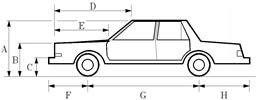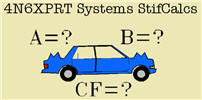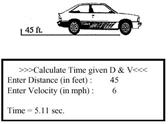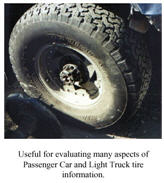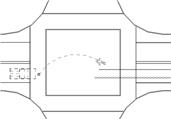The 2011 version of 4N6XPRT StifCalcs will contain a Force Balance module –
The Force Balance approach to Stiffness values is based on the concept of ” Equal and Opposite Forces” in combination with the assumption that one of the vehicles involved has a good set of Stiffness values based on testing.
There are essentially only TWO requirements in order to use a Force Balance approach, and they are:
-
- You must have A-B values for one of the vehicles for the surface that was hit
- Both vehicles must have SOME damage
Beyond these two requirements, the QUALITY of your calculation results will be impacted by :
-
- The quality of the information you have on each vehicle (weight, pass/cargo load, etc.)
- The quality/accuracy of your crush measurements
- The quality of your A-B stiffness values
while the Force Balance analysis CAN be run with degraded information in the above three areas, the quality of the results will also be degraded, sometimes significantly so.
Several SAE papers discuss the Force Balance method, among them – 970942 / 1999-01-0079 / 2005-01-1188 and 2005-01-1205.
Background and formula for the calculations can be found in Balancing Collision Forces in Crush / Energy Analysisby Nathan Shigemura and Andrew Rich available from the IPTM Webstore
( https://store.iptm.org ) under Crash Investigation Publications
A step-by-step approach to using the Force Balance module can be viewed on the following CASE EXAMPLE 1 page below:
As an extension of our Individual Vehicle Data Search Service, we have now added Force Balance Analysis runs to our services. An order form with pricing can be downloaded from this link.
4N6XPRT STIFCALCS
This example is taken from a case study The Speed Triangle – Momentum, Energy, and PCM Data by Charlie Greear, David Thornburg, and Lee DeChant published in COLLISION magazine, Volume 6, Issue #1, page 48. In this collision, a Ford Mustang was racing a Subaru Impreza WRX, and ended up T-boning a 1987 Chevrolet Caprice. There are no side impact tests for the Chevrolet Caprice in the NHTSA Crash Test database, so the authors chose to use a Force-Balance approach to derive the Stiffness values for the Caprice. This example shows how the Force Balance module in the 2011 version of 4N6XPRT StifCalcs® can be used to quickly and easily perform the calculations with the added bonus of obtaining the KE Equivalent Speed, delta-v, and Closing speed based strictly upon the damage to each vehicle.


